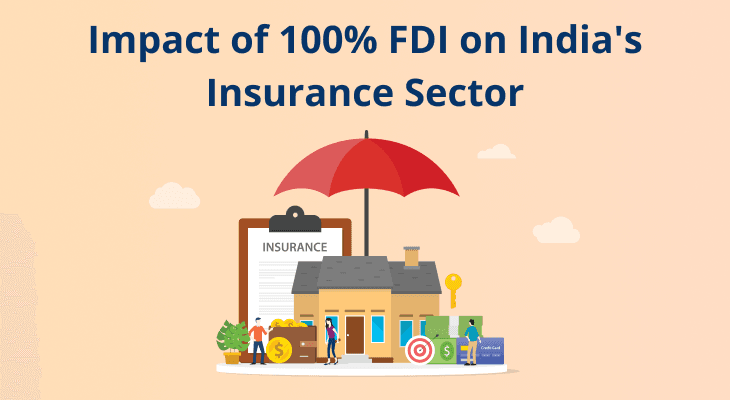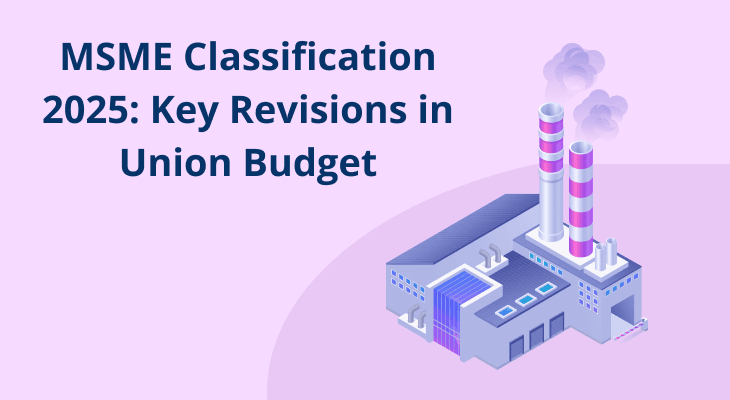
Impact of 100% FDI on India's Insurance Sector
The Union Budget 2025 introduced a transformative change by permitting 100% Foreign Direct Investment (FDI) in India's insurance sector. This strategic move is anticipated to reshape the industry's landscape, bringing forth a variety of opportunities and challenges. Here’s an easy-to-understand summary of the impact and potential benefits this move is expected to bring.
Overview of Foreign Direct Investment (FDI) in Insurance
Foreign Direct Investment (FDI) refers to investments made by a foreign entity directly into the business interests of another country, typically by acquiring assets, establishing operations, or purchasing ownership stakes. In the context of India's insurance sector, FDI has been a vital factor in shaping its development and integration with global markets.
For a long time insurance was the domain of government-backed players. The liberalisation of India's insurance sector began in 2000. This allowed private companies to solicit insurance and permitted foreign direct investment up to a limit of 26%. This initial move aimed to infuse capital, enhance competition, and introduce international best practices.
As a result, today, more than 50 insurance providers are active in the Indian market with a combined AUM (Assets Under Management) of over ₹67 lakh crore (as of 31st March 2024).
Evolution of FDI Limits in the Insurance Sector
India's insurance sector has witnessed a progressive relaxation of FDI norms over the past two decades:
- 2000: FDI up to 26% was permitted, marking the initial opening up of the sector to foreign investments.
- 2015: The FDI cap was increased to 49%, aiming to attract more foreign capital and expertise.
- 2021: The limit was further increased to 74%, providing foreign investors with greater control and encouraging deeper engagement.
- 2025: The latest policy change allows for 100% FDI, enabling full ownership by foreign entities, provided that all policyholder premiums are invested within India.
This gradual liberalisation reflects the government's intent to bolster the sector's growth, enhance competitiveness, and integrate global best practices. More than 41 active insurance companies have been recipients of FDI, and the number may go higher with the latest reform. The eagerness of foreign entities to invest in the Indian insurance factor is made evident by the fact that more than ₹27,000 Crore FDI amount has been received since the limit was raised to 74% in 2021.
Potential Benefits of 100% FDI in Insurance
The decision to permit 100% FDI in the insurance sector is poised to offer several advantages:
- Capital Infusion: Allowing full foreign ownership is expected to attract substantial capital inflows, strengthening the financial base of insurance companies and facilitating expansion into underserved markets.
- Technological Advancements: Foreign insurers often bring advanced technologies and innovative solutions, enhancing operational efficiency, customer service, and product offerings.
- Increased Competition: The entry of global players is likely to intensify competition, leading to better pricing, improved service quality, and a wider array of insurance products for consumers.
- Enhanced Insurance Penetration: With greater resources and expertise, insurers can penetrate rural and semi-urban areas more effectively, aligning with the government's goal of "Insurance for All" by 2047.
- Employment Opportunities: The expansion and diversification of insurance services are anticipated to generate new jobs across various functions, contributing to economic growth.
Impact on Different Stakeholders
The policy shift to 100% FDI in the insurance sector will have varied implications for different stakeholders:
Policyholders
- Improved Product Offerings: Policyholders can expect access to a broader range of insurance products tailored to diverse needs, including innovative policies prevalent in global markets.
- Competitive Premiums: Increased competition may lead to more competitive premium rates, making insurance more affordable.
- Enhanced Customer Service: Adoption of global best practices is likely to improve customer service standards, claims processing, and overall user experience.
Insurance Companies
- Access to Capital: Domestic insurers can benefit from enhanced capital availability, supporting business expansion, technological upgrades, and risk management.
- Strategic Partnerships: Opportunities for collaborations with foreign entities can lead to knowledge transfer, innovation, and improved governance.
- Market Dynamics: While increased competition may pose challenges, it also encourages efficiency and innovation among existing players.
Investors
- Attractive Investment Opportunities: The liberalised FDI regime makes the Indian insurance sector more attractive to foreign investors seeking long-term growth prospects.
- Regulatory Clarity: Clear guidelines on FDI policies provide a stable investment environment, reducing uncertainties and fostering investor confidence.
Economy
- Economic Growth: The influx of foreign capital and the expansion of insurance services contribute to overall economic development.
- Financial Inclusion: Improved insurance penetration supports financial inclusion, providing a safety net for individuals and businesses across various socio-economic segments.
- Infrastructure Development: Increased investments can lead to the development of robust insurance infrastructure, including digital platforms and distribution networks.
Conclusion
The move to allow 100% FDI in India's insurance sector marks a significant milestone in the industry's evolution. It is anticipated to bring in substantial foreign capital, foster innovation through advanced technologies, and enhance the overall competitiveness of the sector. While the benefits are substantial, careful implementation and regulatory oversight will be crucial to ensure that the interests of all stakeholders, especially policyholders, are safeguarded. This policy change aligns with India's broader economic objectives of fostering growth, enhancing financial inclusion, and integrating with the global economy.


